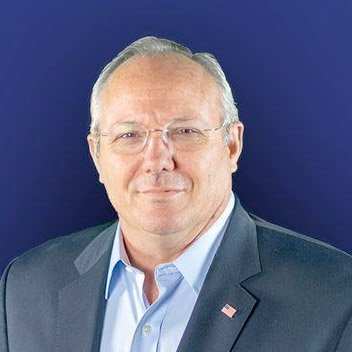Overshadowed by a large cloud called ‘nationwide boycott’, the Iranian regime held its presidential (s)election on Friday while officials from all ranks were begging grieving factions and the population to turn out and vote for the sake of the regime’s legitimacy. Despite everything the state-media tried to project or hide, the result remained unchanged: a weaker regime is getting its first US-designated and domestically-hated President.
In the last 42 years, in Western eyes, the Iranian regime has oscillated between “hardliners” and “reformers.” After the onset of crippling sanctions in recent years that brought the economy to the brink of collapse, Tehran’s Supreme Leader Ali Khamenei has chosen to close ranks and thus eliminated rival factions for this week’s presidential elections. Political observers are now wondering where Tehran is heading and why.
Ali Akbar Velayati, the regime’s former minister of foreign affairs under now-deceased former President Akbar Hashemi Rafsanjani, and senior advisor to Khamenei, wrote in a book that he once met with Khomeini, the regime’s former supreme leader, to complain about the state-run daily Kayhan. According to the former FM, the newspaper’s editorials had a destructive effect on Iran’s foreign affairs and Velayati’s efforts to ease tensions with the world amid the Iran-Iraq war. Khomeini calmly told him: ‘Let them do their job and you should do yours. If some people listen to you, it is because of the things they say, not the things you do.’
Khomeini knew that the pragmatic mindset of Western decision-makers are always favoring bad over worse and thereby used internal disagreements within his regime to engineer a fictitious dual system that keeps the Western world in check. A CIA intelligence assessment from 1983 titled ‘Khamenei and Rafsanjani; Rivals for Power in Iran’ reveals how the US was closely monitoring these two main players of the Islamic Republic, in order to understand their political orientations, and to adapt itself with the next leader In Tehran. As per CIA’s appreciation, Rafsanjani had a more hostile view towards the West and therefore posed a less desirable option for the United States. Considering how things ended up in reality, this conclusion just displays the lack of understandings of the regime’s dynamics in Washington.
Regardless of the international tides, for ordinary Iranians, the reality of the Islamic Republic speaks to the drastic deterioration of human rights, deprivation of political freedoms and the vanishing of all social and cultural liberties.
During his time as Supreme Leader, Khamenei has collaborated with three different presidents that the West considered either “pragmatic”, “reformist” or “moderate”. The 82 years old knows perfectly well how to use the illusion of an Iranian version of partisanship to prevent the formation of an international alliance against the regime.
The appetite for the untapped Iranian market and its oil remained firm in the West and with a less antagonistic administration in Washington, it should have been rational for the Supreme Leader to support someone that Western and Middle East leaders would like to interpret as a sign of moderation within Tehran. But instead, Khamenei used the Guardian Council, whose members are half appointed by himself and the other half by the judiciary (also appointed by Khamenei), to disqualify everyone who presented a risk to Ebrahim Raisi, Khamenei’s favorite candidate. He is the current Judiciary Chief and soon-to-be President.
In 1988, at the age of 28, Raisi was appointed as a member of the death commission to execute all political prisoners affiliated with the main opposition group Mujahedin-e Khalq (MEK). The organization was considered as the regime’s most critical security threat and had more than 30,000 inmates spread throughout Iran. Raisi is said to be among the fiercest and strictest to execute Khomeini’s fatwa to kill all MEK sympathizers.
During his tenure as Chief Justice, he approved hundreds of executions, including the hanging of wrestling champion Navid Afkari, who had participated in anti-regime protests. If ‘people are policy’, then we must let logic guide our comprehension and accept that the Iranian regime has more urgent priorities than sanctions and international isolation.
Like it or not, the Iranian society is moving towards an unprecedented time of revolt against the entire ruling class. The huge gap between the eighty percent of the population being under the official poverty line and the one percent privileged, mostly affiliated with the regime, is the root of daily protests throughout the country. The presidential campaign and three televised debates, where all candidates focused solely on domestic issues revealed how much they worried about the grave domestic conditions.
In a regime where every living president has eventually quarreled with the supreme leaders, Khamenei has chosen someone who has the least international prestige but the most domestically appalling profile. In short, Khamenei has no fate beyond the Islamic Republic itself.
Western observers might take the regime’s bloody crackdown of nationwide uprisings and conclude that Khamenei is eventually going to weather more storms. But, faced with more ferocious uprisings on the horizon, Khamenei’s desperate actions and decisions should be more telling. When covering Iran, Western media mainly discuss the nuclear dossier and the regime’s meddling in the region. Maybe it’s time to fathom what Tehran’s decision-makers are actually having headaches about.
Siavosh Hosseini is an Iran expert and the head of the Iran Desk at The Media Express. His twitter handle is @siavoshhosseini



Leave a Comment
COMMENTS POLICY: We have no tolerance for messages of violence, racism, vulgarity, obscenity or other such discourteous behavior. Thank you for contributing to a respectful and useful online dialogue.